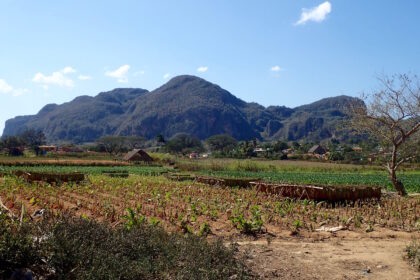While the pumpkin spice latte abounds during this time of year, perhaps making it the ubiquitous American coffee drink, coffee beverages take on just as unique forms across the world. On your travels, try checking out a few of these to revamp your daily java intake.
Cafe Cubano (Cuba)
For those of you who like your coffee dark and strong, look no further than a café cubano, known for its jolt of caffeine tempered by a sweet top layer. The recipe is simple: a shot of espresso covered by crema, sugar that’s whipped with a bit of espresso — a “short and sweet” way to kickstart the day. Also known as Cuban coffee or un cafecito, this drink thrives stateside and in its native home. If you’re a coffee drinker who prefers their java on the even sweeter and creamier side, try a café con leche, a milk-based drink that pairs espresso with hot milk and sweetener–what is essentially the Latin American cousin of the French café au lait.

Turkish Coffee (Turkey)
In a similar vein as Cuban coffee, Turkish coffee is known for its small size, its thickness, and its strength. Unlike Cuban coffee, which was popularized by the presence of Italian espresso machines on the island, the Turkish coffee tradition dates back to the mid-16th century and is made by combining finely-ground coffee beans with cold water and sugar, which are then brewed in a small pot called a cezve, and poured and served in small cups. The drink has been a cultural mainstay of its home country, Turkey, and it has even wound its way into the culture of many Eastern European countries. Turkish coffee is such an integral part of Turkish culture that it has even been identified by UNESCO as an element of “intangible cultural history.”

Flat White (Australia/New Zealand)
You may think that the flat white is the successful Starbucks sibling of the pumpkin spice latte, but this drink actually originates on the other side of the globe. While debate ensues over which country — Australia or New Zealand — is the “true” origin of this drink, sources agree that both are integral to its success in the late 20th century (the 70s or 80s–there are debates about that, too). Though many Americans jumped on the Starbucks flat white bandwagon, there was widespread confusion over what this drink actually is and how it differs from your run of the mill latte. Simply put, a flat white is smaller, usually served colder, contains two shots of espresso that are paired with “micro-foamed milk” that is “freely poured with the espresso,” often resulting in a “velvety texture.” This rich drink seems worth seeking out in its original home, though it’s nice to know you can walk down the street to try the Americanized version, too.

Kan Kohi (Japan)
Though we tend to picture coffee drinks as steaming cups of caffeinated goodness, in Japan you might be more likely to take your coffee cold and canned, since kan kohi (literally “canned coffee”) is one of the country’s most popular drinks. Ueshima Coffee Company (UCC) is credited with being the first to produce this beverage in 1969, and drink companies, including NesCafe and Coca-Cola, remain notably competitive about producing their own versions. Canned coffee has become such a popular part of Japanese food culture that writer Nobi Nakanish describes it as “as chic and ephemeral as fashion trends.” If you find yourself in Japan in a cold season, though, fear not: vending machines and stores sell warmed canned coffee.

Kaffeost (Sweden/Finland)
Coffee and cheese? Maybe you never thought these two could, or should, be combined, but there indeed exists a rich Swedish tradition of dipping cheese into coffee, or drinking the coffee with the cheese in it. The cheese, Leipäjuusto, commonly hails from Finland, though it can also be found in northern Sweden, and is made from the milk of cows, goats or reindeer (that’s right: reindeer!). If this doesn’t sound like the best option for you in a country that loves coffee, an alternative is kaffebröd, or coffee taken with a sweeter bread/bun.

Just as we see in the U.S., with the plethora of variations to the morning cup of joe, coffee abroad takes on fascinating shapes, brewing styles, and flavors, reflecting the unique cultures of the regions in which they exist.
What’s your favorite style of coffee? Please share in the comments below.
Also Check Out:
Coffee Travel: The World’s Best Destinations For Java Enthusiasts [Blog Inspiration]
The World Atlas of Coffee: From Beans to Brewing — Coffees Explored, Explained and Enjoyed by James Hoffmann [Must Reads]
Cobra Squeeze Laptop Backpack [Eco-Friendly Finds]
Latest posts by Paige Sullivan (see all)
- Holiday Treats & Christmas Traditions Around The World - Dec 19, 2016
- Handouts In Developed Nations: Advice For The Responsible Traveler - Jun 7, 2016
- 5 Immersive Culinary Enclaves To Savor In NYC - Feb 18, 2016
- Traveling Responsibly & Protecting Fragile Environments - Jan 9, 2016
- Can Tiger Tourism Be Responsible? - Jan 9, 2016





